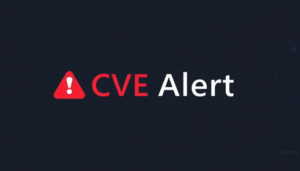CVE Alert: CVE-2025-59505 – Microsoft – Windows 10 Version 1809
CVE-2025-59505
Double free in Windows Smart Card allows an authorized attacker to elevate privileges locally.
AI Summary Analysis
Risk verdict
High risk of local privilege escalation; an official fix is available, so patch promptly to reduce exposure.
Why this matters
The double-free flaw in the Windows Smart Card Reader enables an authorized local user to elevate privileges with high impact on confidentiality, integrity, and availability. In environments relying on Smart Card authentication, an attacker who gains local access could move from a foothold to higher privileges, potentially compromising security controls and administrative functions.
Most likely attack path
Exploitation requires local access (no user interaction). An attacker with low-privilege local capability could trigger the vulnerability via the Smart Card subsystem, escalating to higher rights within the same scope. This enables lateral movement within the compromised host and preservation of access, subject to the unchanged scope constraint.
Who is most exposed
Enterprise endpoints and servers that rely on Windows Smart Card authentication are at risk, particularly organisations using affected Windows versions listed in the advisory. Any environment with Smart Card logon, admin consoles, or remote management tied to these platforms is a candidate for exploitation.
Detection ideas
- Look for unexpected SYSTEM-level process launches originating from Smart Card-related services.
- Detect memory-corruption crashes or fault logs linked to Smart Card components.
- Monitor for anomalous local logon attempts tied to smart card events or extended privilege changes.
- Alert on Smart Card service crashes or restarts outside maintenance windows.
- Correlate authentication events with sudden privilege elevation indicators.
Mitigation and prioritisation
- Apply the Microsoft fix via Windows Update/SSP as a high-priority patch rollout; test in staging before broad deployment.
- If patching is delayed, enforce compensating controls: restrict local logon on high-value systems, segment admin workstations, and limit Smart Card access where feasible.
- Enhance detection: tighten Smart Card event monitoring, enable strict ASLR/DEP, and deploy enhanced fault logging.
- Change-management: notify stakeholders, verify asset coverage, and map affected endpoints to patch status; document rollback if issues arise.
Support Our Work
A considerable amount of time and effort goes into maintaining this website, creating backend automation and creating new features and content for you to make actionable intelligence decisions. Everyone that supports the site helps enable new functionality.
If you like the site, please support us on Patreon or Buy Me A Coffee using the buttons below.


